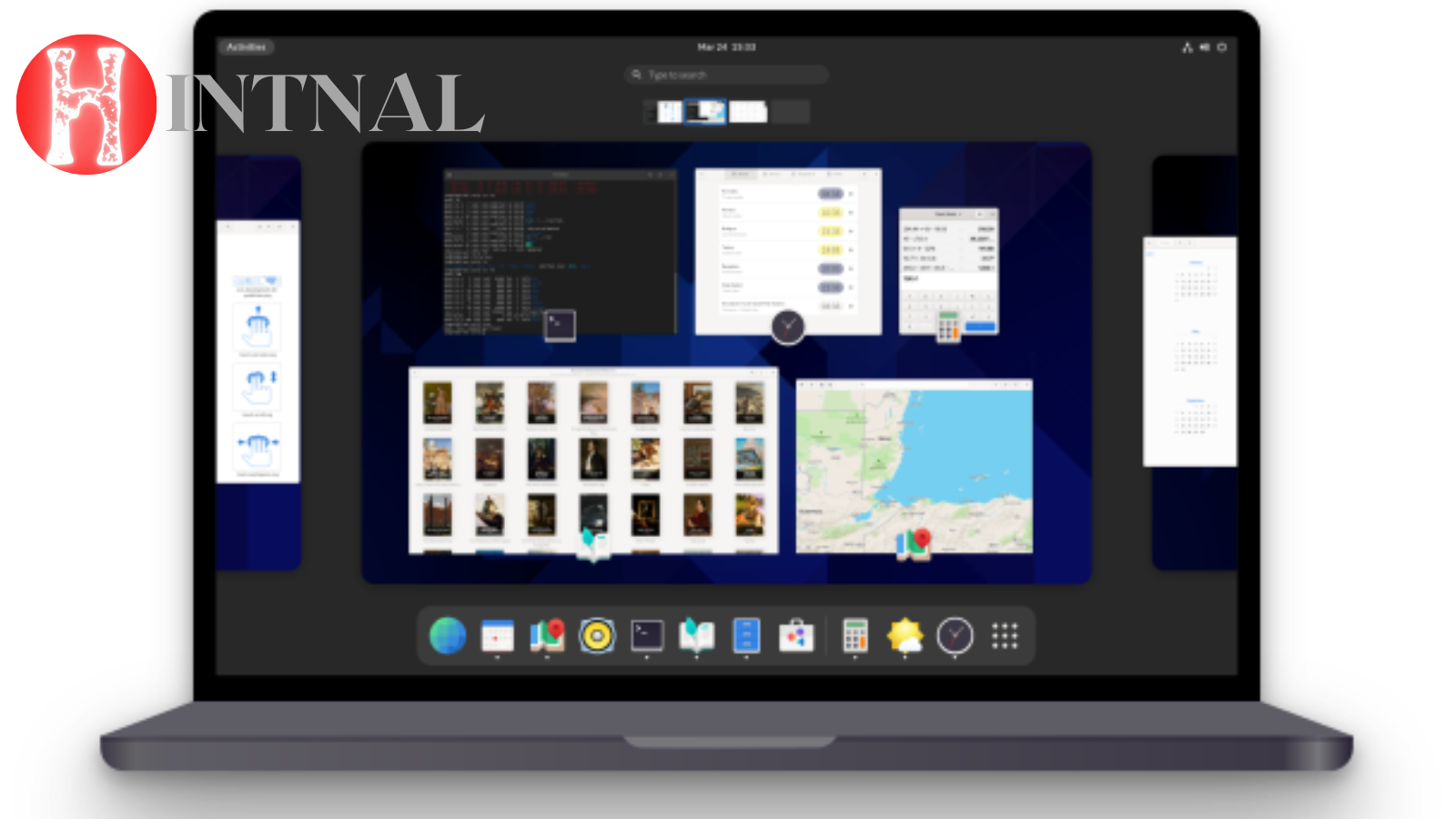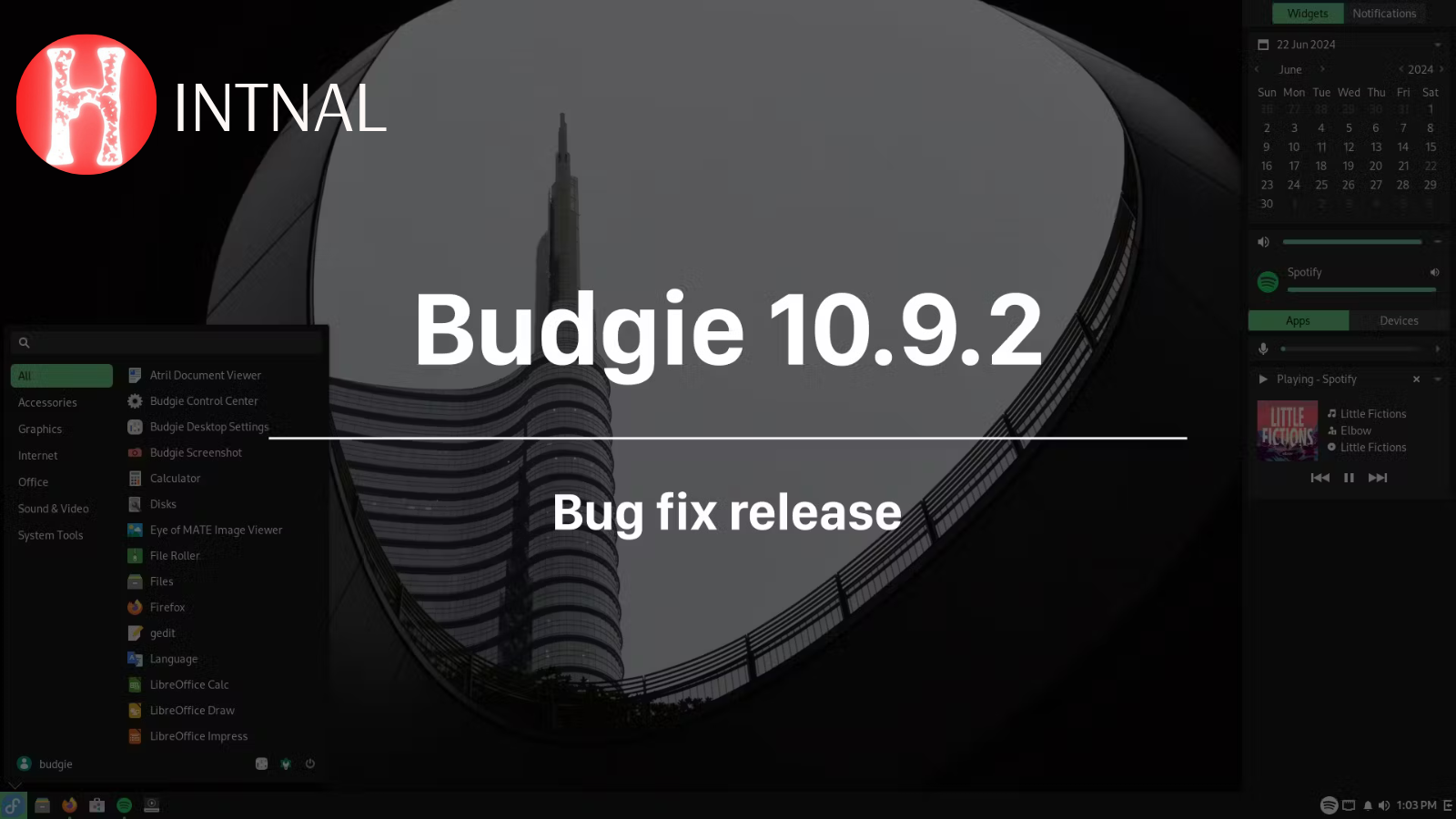
The hugely well-liked open-source desktop environment developed by the GNOME project has just been updated.
The fundamental updates in GNOME 44 range from striking new features to more understated upgrades and lower-level advancements. The GNOME 43 release from last year was a fantastic installment, and everything arriving in GNOME 44 keeps moving steadily in the same direction.
GNOME 44 is already included in Ubuntu 23.04, so if you decide to update, you’ll be able to try out (almost) all of the fantastic enhancements you can see below starting next month.
GNOME 44’s New Features
GNOME 44 is, if anything, about growth and reworking. Nowhere is that tendency more apparent than in the Quick Settings menu. Since its debut last year, this pod-based port-of-call has received fantastic feedback, and with this update, it gets even better.
First off, you can now rapidly swap between a wired or wireless network and join or detach from Bluetooth devices from the Quick Settings interface. Although you can’t connect new devices from this option right now (use Settings > Bluetooth for that), you can control any paired devices from here on out thanks to a blue-tiful new feature:

There are two noticeable visual improvements to Quick Settings toggles: features with sub-menus have a new split-button appearance (and both parts of the button can be accessed independently with the keyboard, which is awesome); and there are new pod subtitles to relay status, such as which Wi-Fi network is active, which Bluetooth device is connected, etc:
READ ALSO: Release of Trisquel 11, based on Ubuntu 22.04 LTS

Finally, if you use Flatpak applications, whenever a suitable app is operating without a window visible, a new Background applications area will appear in the menu. Do not worry about this area overrunning your settings menu because it only shows when active applications are open:

One last (relatively small) Quick Settings change that I frequently use is the ability to quickly silence or unmute speakers by clicking on the speaker symbol to the left of the volume scale, or by selecting it with the keypad.
A miscellany of marvels
Thumbnails can now be seen in GNOME’s file chooser window (old GTK applications will still display the list-only one, just so you know):

There are numerous upgrades in the Settings app:
- Redesigned Accessibility page
- the capability to allow overamplification
- the choice to switch off overlay scrollbars
- improved message for the acoustic test
- mods to the device security interface
- Utilize QR symbols to distribute Wi-Fi networks.
- Lists kernel version in the About part.
- Settings for Thunderbolt only show up when necessary
- support with setting up Wireguard VPNs
Additionally, the Mouse & Touchpad settings have been improved and extended. There are now adorable animated movies that show what each mouse and touchpad setting option does, as well as (after much request) a toggle to disable mouse acceleration and grade marks on various sliders for more exact tuning:

The Nautilus file organiser has received some worthwhile updates, such as:
- Expandable folder option in list view
- Tabs can now be pinned
- Tabs support dragging items on to them
- The ‘goldilocks’ grid view size returns
- Ability to ‘paste’ clipboard images as new file
Other changes include:
- Larger user pods on login and lock screens
- Improved low battery power notifications
- Disable Settings results from showing in the overview
- Less buggy drag and drop in the app grid
Additionally, there are a tonne of modifications in GNOME’s Core applications that Ubuntu doesn’t by default include. The GTK4 version of the web browser;Wikipedia articles for well-known locations are now displayed on maps;Contacts enables communication through QR codes;Along with other improvements, the Weather app now has a more colourful user interface.
Getting GNOME 44
Since the GNOME 44 desktop environment’s source code is now accessible for download, Linux distro maintainers can begin packing it and distributing it to their users.
For GNOME 44, Ubuntu users must upgrade to Ubuntu 23.04. The upgrade won’t be backported to already released versions. (officially, at least). Fedora 38 Workstation and other Linux versions all have plans to release GNOME 44 in the near future.
Users of rolling-release distributions like Arch, EndeavourOS, Manjaro, and others will receive this upgrade sooner, though it might not be right away. (some prefer to wait until the first point release is made).
Finally, you can also get updated GNOME OS images. Remember that GNOME OS is more of a platform demonstration than a standard Linux version. GNOME OS can be installed on actual devices, but there are some restrictions. The Boxes VM program, which runs on Linux servers, performs best when GNOME OS is used as a guest OS.
SEE ALSO: Fastrack Reflex Play|1.3” AMOLED Display Smart Watch with AOD


